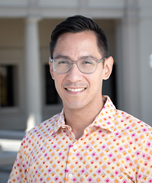 On Occidental College Week: Nature can give us the compounds to treat afflictions, but are we taking advantage?
On Occidental College Week: Nature can give us the compounds to treat afflictions, but are we taking advantage?
Raul Navarro, assistant professor of chemistry, looks at one avenue to do so.
Raul Navarro was born and raised in Los Angeles, CA. He obtained his bachelor’s degree in chemistry at Yale University, then traveled back to California to conduct his graduate studies at Caltech, where his research focused on the total synthesis of propellane alkaloid natural products. After obtaining his PhD, Raul made his way up north to Stanford University, where he investigated the development of chemical genetic tools to study protein function. He is currently an Assistant Professor of Chemistry at Occidental College, where his research group investigates the development of new transition-metal catalyzed reactions to construct bioactive molecules.
Organic Chemistry as Molecular Architecture
From the genetic information stored in the trillions of cells in the human body, to the clothing we wear, to the life-saving medications we rely on, organic chemistry is a field of study that permeates every facet of our lives. If you were to take a magnifying glass to the world around you, you’d quickly discover that most of it is made of carbon-based molecules. Many of these molecules serve as inspiration for chemists, both in terms of their chemical structure and potential applications.
Consider the discovery of penicillin, a naturally occurring organic molecule produced by a fungus that has had a transformative impact on the way we treat bacterial infections, ultimately saving millions of lives. There exist many more organic compounds produced by living organisms with similar life-saving properties–anticancer, antiviral, antiparasitics–but they aren’t produced in large enough quantities to treat an entire human population. Organic chemists like myself ask the question: can we make these medicinally useful compounds in a laboratory setting? Specifically, can we devise a sequence of chemical reactions that allows us to make them efficiently, and in sufficient quantities to study further and implement?
Much like an architect might develop the blueprint that guides the construction of a new building, organic chemists design a strategic plan to build promising molecules from simple chemical building blocks. Current research in my laboratory seeks to develop an efficient synthesis of organic compounds that can potentially serve as treatments for hepatitis B, one of the most common viral liver infections worldwide. The collective results of our and other research endeavors not only enable the preparation of these bioactive compounds isolated from nature, but also facilitate the discovery of new chemical tools that enable the preparation of new, man-made compounds with new or improved activities.
